Last Updated on March 5, 2024 by Masha Eretnova
To make sure acrylic paint sticks well to canvas and stays there permanently without cracking or bleeding we need to prime the canvas, prepare it. How to prepare canvas for acrylic paint?
Most canvases in store are already primed and don’t require additional gesso. If you have raw or rough canvas, you can apply 2-3 coats of gesso before painting with acrylic paints.
Some painters argue that gesso isn’t really that necessary but to be fair, gesso significantly improve how smooth the surface is and how well the colors pop and stay on canvas. And while you absolutely can paint on raw, unprimed, canvas, for better result use a gesso.
This article contains affiliate links. It means no extra cost for you but a little commission (2-3%) for me to support my hobby and blog. Thank you!
What You Need To Prepare A Canvas:
- Gesso, you can choose any other or make your own
- craft quality (mostly glue based gessos)
- artist-grade – Golden Gesso
- Wide flat brush
- OPTIONAL: 220-240-grit sandpaper if you want to sand the layers in between each other.

If you paint often, invest in a bigger jar/bucket of gesso. It is cost-efficient and will last long for you.
If you bought your canvas online or in art store, check the label – if it says Primed (double-primed/triple-primed) it means the manufacturer already applied 1 to 3 coats of gesso and you can paint straight away.
No preparation needed! Unless, when you open and touch the canvas it feels too rough for your preference.
Than it won’t hurt to lightly sand the canvas and apply one more layer of gesso.
Note that generally gesso is white. But you can make it your color by simply mixing in a bit of acrylic paint. Some professional brands sell colored gessos as well.
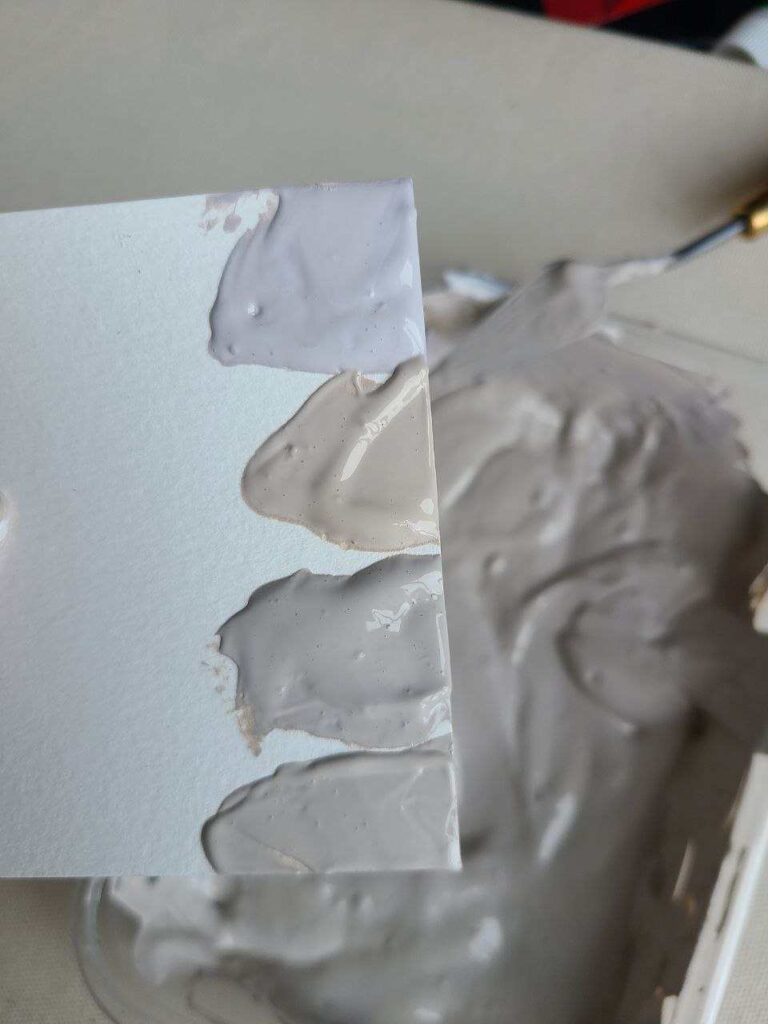
How to Prepare Canvas for Acrylic Paint – Step by step
- Prepare your workplace and materials. If you have a jar or a tub for gesso, stir it very well! Gesso is thick so use a wide wooden stick.
- If you want to get more pigmented gesso, add acrylic paint color you like (I mix with a palette knife)
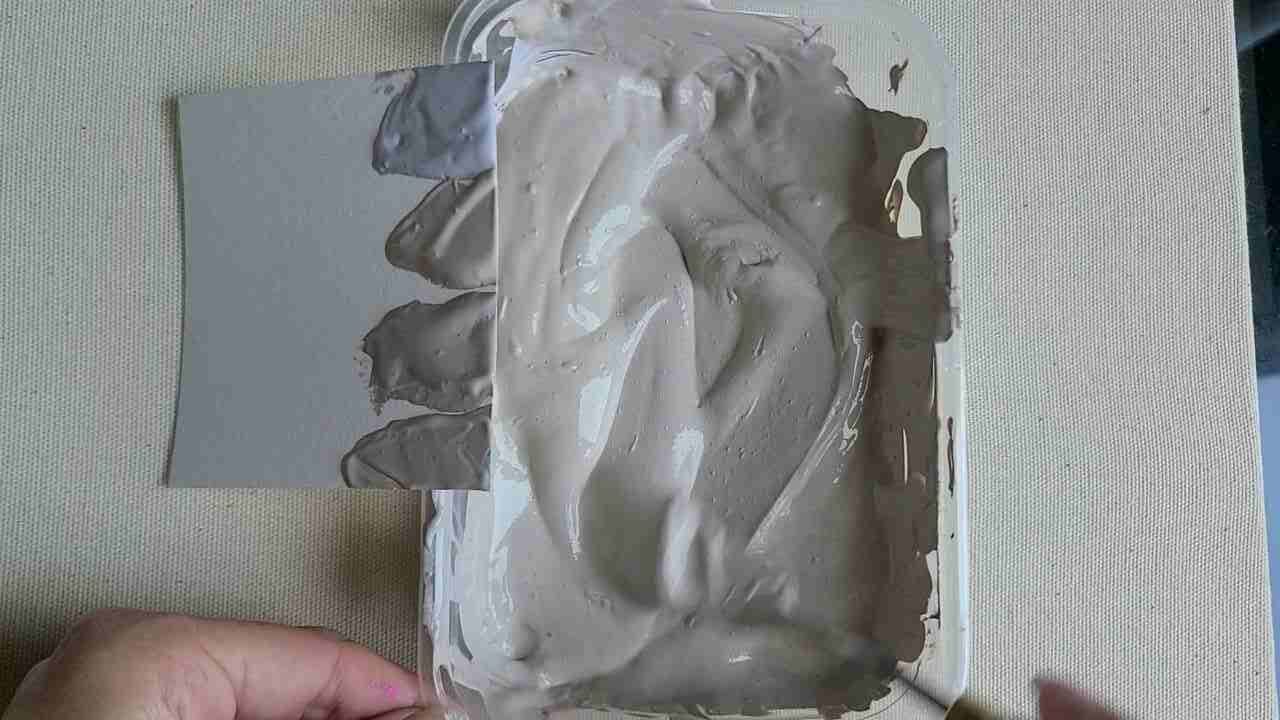
If you need to play with texture, try to add some texture gel
If you want to make gesso thinner and the layers more smooth, add some water
- Apply the first coat with a brush. Use a wide, stiff brush. The bigger your surface, the bigger brush you will need. Work quickly.
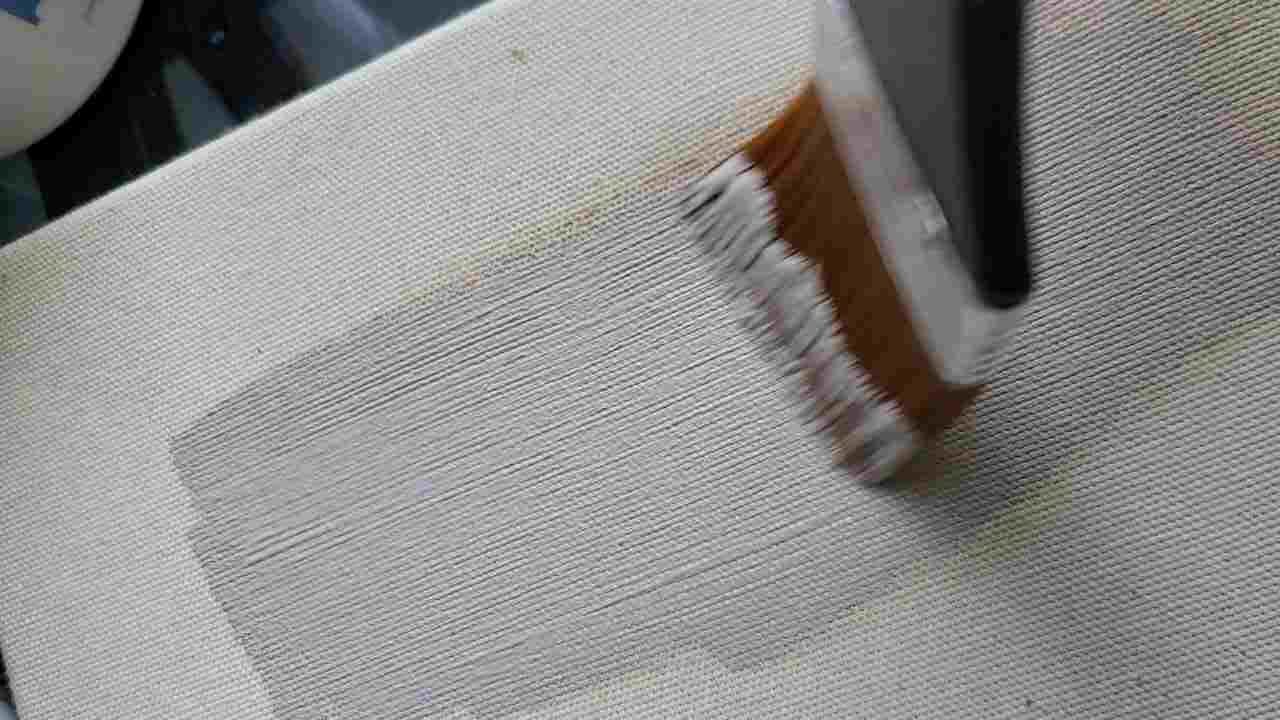
- Let it dry, then apply a second coat.
- To make a really smooth coat, use sandpaper to gently sand in between each layer. Wipe it off.
- Brush back and forth over the surface.
- Pop any bubbles.
- Once dry, sand your surface slightly if it feels rough.
- Repeat steps 1-4 until the surface you prefer is obtained. Usually 2-3 coats is enough.

- Let it dry. For optimal results, the gesso is best left to dry overnight.
- Wash your brush out immediately in running water then use a brush cleaner to thoroughly remove the gesso. It’s worth cleaning it twice even if you think it’s clean. Believe me gesso gets really well into the brush and a brush holds more than you think.
Done! You are all set to start painting.
Continue reading: How to Use Acrylic Paint On Canvas: 3 Easy Steps For Beginners
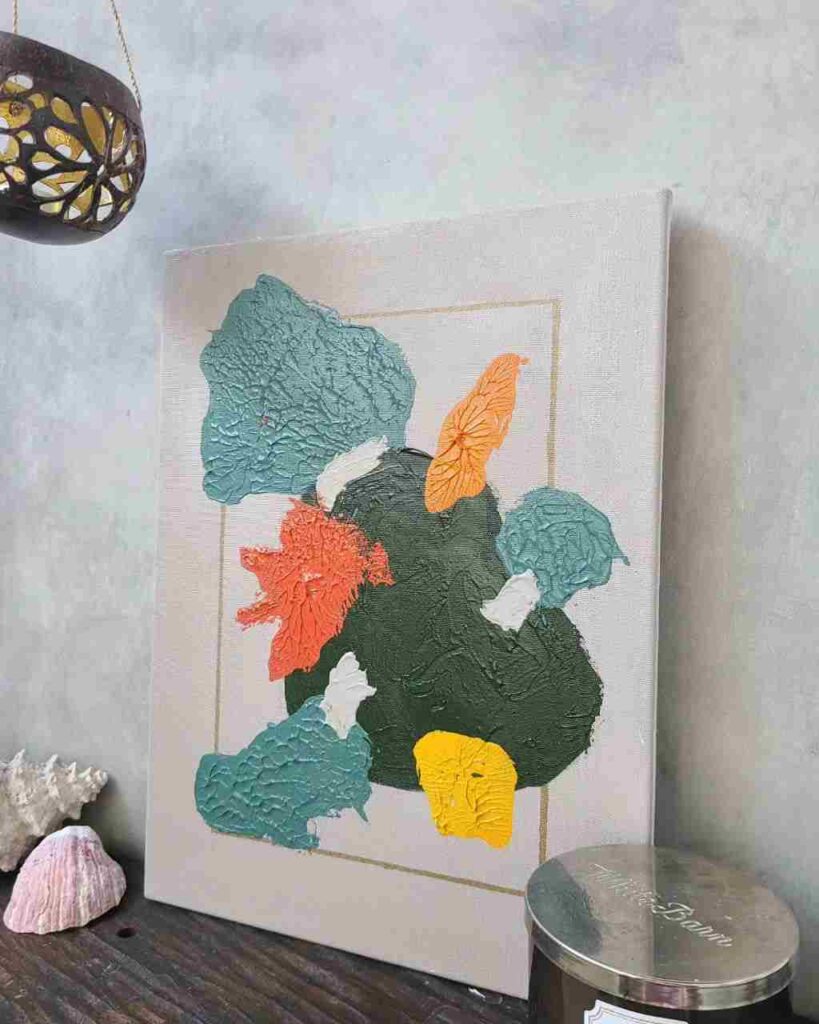
My personal experience with priming canvas for acrylic painting
I am painting on canvas since 2018 and consistently since 2020. And I have noticed a few things.
- I mostly use store-bought canvases of all sizes and shapes (small, round, square, big) and all of them were primed perfectly. I never needed to add more gesso.
- I tested raw cotton canvases as well, gessooing them is very satisfying and 1 coat is not enough is the goal is to thoroughly cover the canvas and make it super smooth.
- Painting on raw canvas without preparation and gesso was fun too, the acrylic paint didn’t soak through too much, didn’t have any issues at all.
- Tinting you own gesso is easy and fun. I premixed quite a bit and stored it in an airtight container, it was good for around 3 weeks!
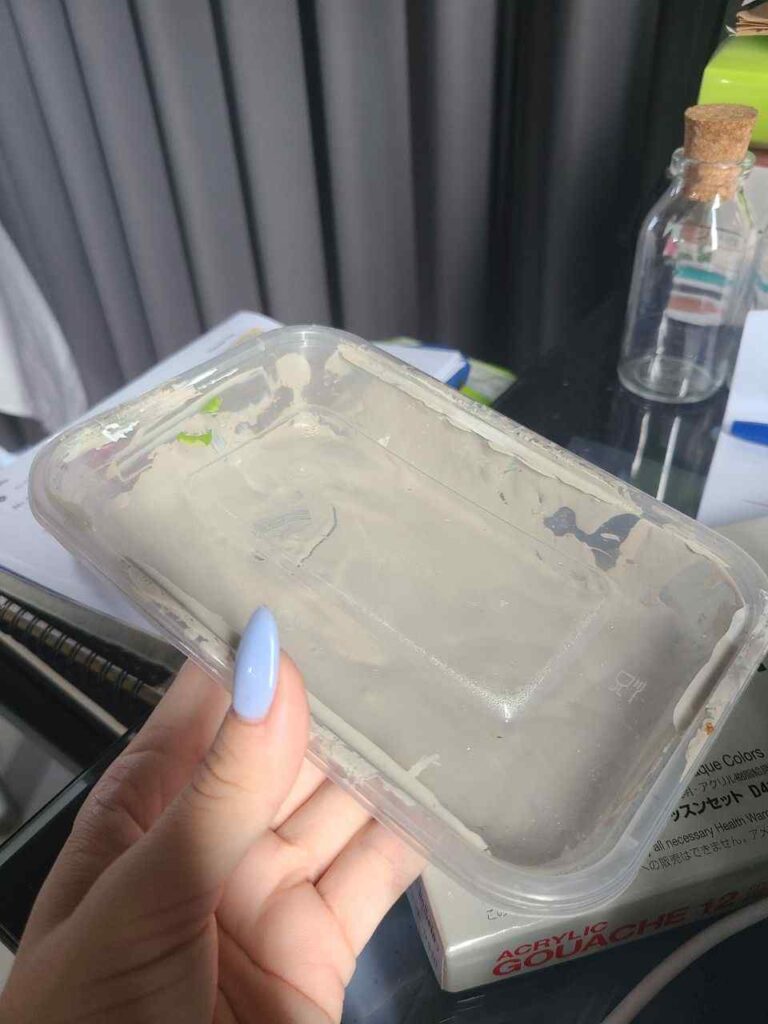
- gesso is useful not only for priming the canvas! It can also help to make acrylic paint thicker and smoother! Some painter have “secret” recipes with paint, gesso and some other ingredients to get the smoothest paint ever. Of course, they use high quality gesso.
- I honestly tried to make my own gesso, but for me the effort is not worth the amount of money you save. For a few reasons:
- firstly, you need to order plaster or talcum or other DIY ingredients in bulk. You don’t even know if it is gonna work but often they are not sold in small packages but like…1 kg! Wow.
- most of the DIY ingredients are powder. I don’t deal well with dust and powders, even with a mask, it irritates my nose badly. And imagine mixing, measuring all this? I gave up.
- you need to store it. You need to store the powdery ingredients in a non-messy way somewhere and your newly made gesso. It won’t last for a whole year so you can only make a large batch if you truly make a lot of paintings on canvas and still need to store all this beauty…where!
Ultimately, I hope you realize now that you don’t have to do any special preparation for a regular canvas you buy in art shop (we are taken care of!) – less spending for us!
And if you do want to try and do the whole process yourself, there is nothing easier than applying gesso!
Also very satisfying 😉 In comparison, varnishing acrylic painting is not as easy and fun as gesso!
Let me know, do you gesso or no? And do you have any tricks to share?

Masha Eretnova, born in 1991, is a Buenos Aires-based certified teacher, artist, and member of the Professional Artist Association with 20+ years of personal painting journey.
She started painting and drawing very early and is now an international abstract artist and educator passionate about acrylic painting, gouache, and crafts.
Her works are part of international exhibitions and contests, including ArtlyMix (Brazil), Al-Tiba 9 (Spain), Exhibizone (Canada), Italy, and many more.
Besides her artistic pursuits, Masha holds a post-grad diploma in Teaching Film Photography and 2 music school diplomas: piano and opera singing.